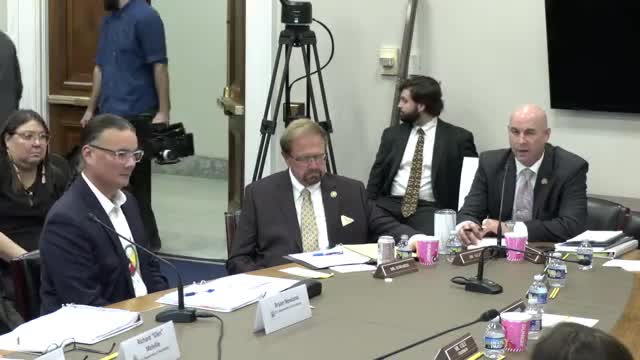Navajo Nation struggles to recruit law enforcement amid lengthy background check delays
This article was created by AI summarizing key points discussed. AI makes mistakes, so for full details and context, please refer to the video of the full meeting. Please report any errors so we can fix them. Report an error »

The U.S. House Committee on Appropriations held a critical oversight hearing on November 21, 2024, focusing on the ongoing crisis of missing and murdered Indigenous women. A key discussion point emerged regarding the significant delays in background investigations for law enforcement personnel in Indian Country, which can take up to a year due to bureaucratic inefficiencies.
A representative from the Bureau of Indian Affairs highlighted the stark contrast between the swift background checks available for civilian gun purchases and the prolonged process for law enforcement positions. "If I can go in cold in Texas and purchase a weapon in less than three days, how on earth does it take a year for a background check for law enforcement?" they questioned, emphasizing the detrimental impact this has on staffing and safety in Indigenous communities.
The representative explained that while the Bureau has made strides in expediting background checks through its own unit, the overarching delays stem from the Office of Personnel Management (OPM) and its contractors, which prioritize other government requests over those from tribal agencies. They advocated for the Bridal Act, a pilot project that would allow tribal agencies to conduct their own background investigations, similar to the FBI's process, potentially reducing wait times from months to weeks.
The hearing also addressed the challenges of recruiting law enforcement officers in Indigenous communities, where interest in law enforcement careers has waned. The representative noted that many young people are drawn to more glamorous professions, such as social media influencers, rather than pursuing careers in law enforcement. To combat this trend, the Bureau has initiated a Youth Indian Police Academy, engaging youth aged 14 to 18 in a two-week program designed to spark interest in law enforcement careers.
With approximately 200,000 residents on the Navajo Reservation and a limited pool of eligible recruits, the representative stressed the urgent need for innovative recruitment strategies to bolster law enforcement services in these communities. The discussions underscored the critical intersection of effective law enforcement and the safety of Indigenous women, highlighting the need for systemic changes to address these pressing issues.
A representative from the Bureau of Indian Affairs highlighted the stark contrast between the swift background checks available for civilian gun purchases and the prolonged process for law enforcement positions. "If I can go in cold in Texas and purchase a weapon in less than three days, how on earth does it take a year for a background check for law enforcement?" they questioned, emphasizing the detrimental impact this has on staffing and safety in Indigenous communities.
The representative explained that while the Bureau has made strides in expediting background checks through its own unit, the overarching delays stem from the Office of Personnel Management (OPM) and its contractors, which prioritize other government requests over those from tribal agencies. They advocated for the Bridal Act, a pilot project that would allow tribal agencies to conduct their own background investigations, similar to the FBI's process, potentially reducing wait times from months to weeks.
The hearing also addressed the challenges of recruiting law enforcement officers in Indigenous communities, where interest in law enforcement careers has waned. The representative noted that many young people are drawn to more glamorous professions, such as social media influencers, rather than pursuing careers in law enforcement. To combat this trend, the Bureau has initiated a Youth Indian Police Academy, engaging youth aged 14 to 18 in a two-week program designed to spark interest in law enforcement careers.
With approximately 200,000 residents on the Navajo Reservation and a limited pool of eligible recruits, the representative stressed the urgent need for innovative recruitment strategies to bolster law enforcement services in these communities. The discussions underscored the critical intersection of effective law enforcement and the safety of Indigenous women, highlighting the need for systemic changes to address these pressing issues.
View full meeting
This article is based on a recent meeting—watch the full video and explore the complete transcript for deeper insights into the discussion.
View full meeting